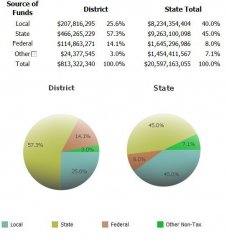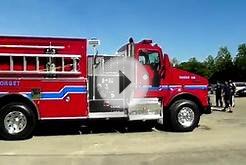- In 1999-2000, the states with the largest number of public secondary schools were California, Texas, Illinois, Ohio, and New York. (Digest of Education Statistics, 2001, Table 101)
Enrollment
- The total 1999 fall enrollment in public secondary schools (grades 9-12) was slightly over 13, 369, 000 students. (Digest of Education Statistics, 2001, Table 37)
- The fall 2000 enrollment in grades 9-12 at public and private schools included 94.1% of all individuals 14-17 years of age. (Digest of Education Statistics, 2001, Table 56)
Academic Achievement
- Average reading scores for 17-year-olds were about the same in 1999 as in 1971. (Condition of Education 2001, Indicator 10)
- Average math scores of 17-year-olds have increased since 1973. (Condition of Education 2001, Indicator 12)
- Average science scores of 12th graders declined by three points from 1996 to 2000. (Condition of Education 2002, Indicator 13)
- While white students continue to outperform black students in core academic subjects, this achievement gap decreased between the early 1970s and the late 1980s. Since the late 1980s, however, the gap has remained relatively stable. (Condition of Education, 2002, Indicator 8)
- Twelfth-grade students in the United States who participated in the Third International Mathematics and Science Study (TIMSS) scored below the international average. (Condition of Education, 2000, Indicator 18)
Academic Coursetaking
- Over the past 12 years, the average number of science and mathematics courses completed by public high school graduates increased substantially. The mean number of mathematics courses (Carnegie units) completed in high school rose from 2.6 in 1982 to 3.4 in 1998, and the number of science courses rose from 2.2 to 3.1. (Digest of Education Statistics, 2001, Table 140)
- Since the 1980s, the percentage of high school graduates completing some advanced coursework in science and mathematics has increased (Condition of Education, 2002, Indicator 26)
Vocational Coursetaking
- Although overall vocational coursetaking declined among public high school graduates between 1982 and 1998, occupational coursetaking remained relatively steady (Condition of Education, 2001, Indicator 35)
Graduation
- Over the past two decades, increasingly percentages of students have completed high school (from 69% in 1980 to 84% in 2000). At the same time, among persons aged 25 or older, fewer Black and Hispanic students eventually complete. (Bureau of the Census, Table A-2)
Transitions to College
- Over the past two decades, increasing percentages of high school graduates have enrolled in college in the fall following their graduation (from 49% in 1972 to 62% in 2000) (Condition of Education 2002, Indicator 20)
Earnings
- Over the past 20 years, the earnings of young adults who completed at least a bachelor's degree increased relative to their counterparts who completed no more than high school. (Condition of Education 2002, Indicator 16)









